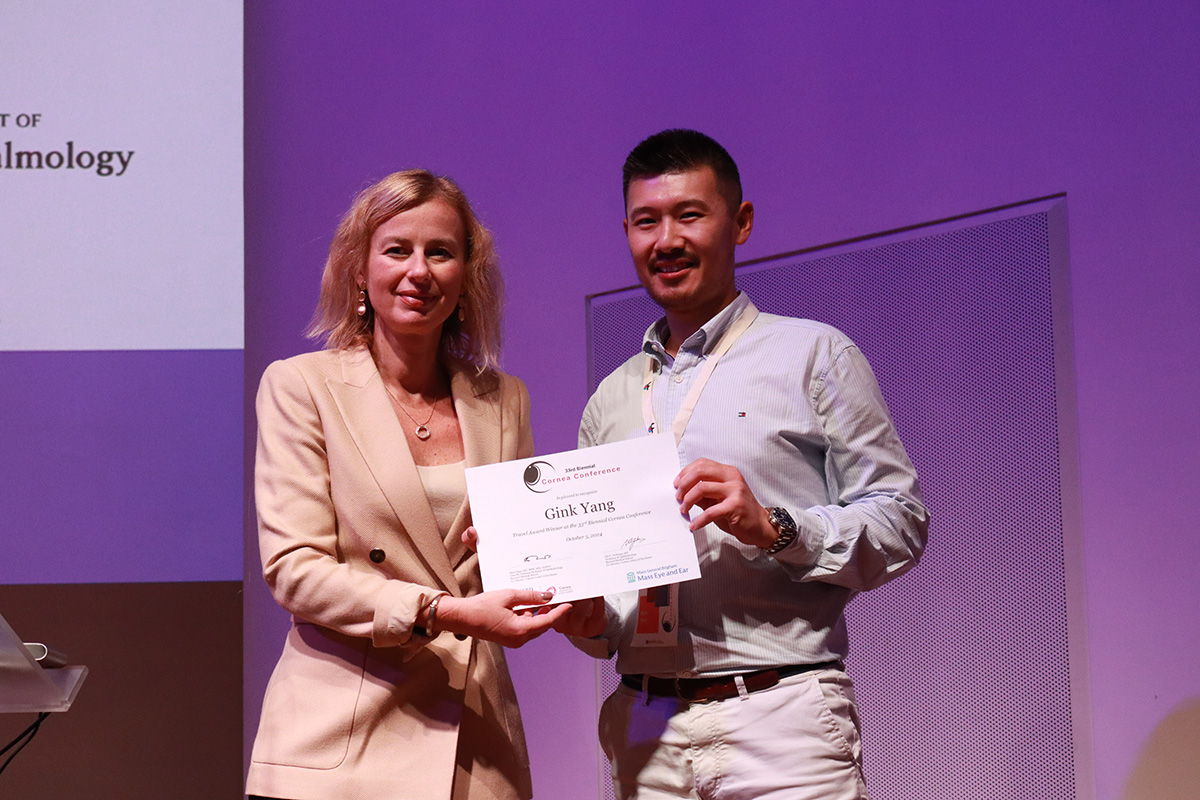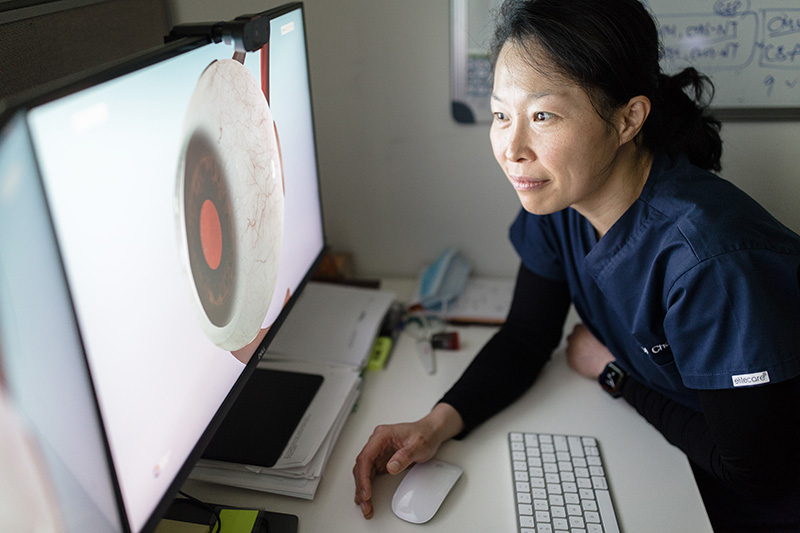News
Precision medicine transforming treatment for corneal blindness
CERA researchers have explored the potential of genetic analysis to transform how Fuchs’ endothelial dystrophy is diagnosed and treated, with the hope of improving future outcomes for patients.
Imagine if treatment for your eye condition was tailored to your individual genetic makeup, not what works for most patients. This is the potential of precision medicine, a field that is transforming healthcare.
CERA Research Fellow Dr Gink Yang is a passionate advocate for precision medicine in ophthalmology. He’s been exploring how it can be used in the diagnosis and management of Fuchs’ endothelial dystrophy, paving the way for targeted treatment based on a patient’s unique genetic profile.
Challenges in diagnosing Fuchs endothelial dystrophy
Fuch’s endothelial dystrophy affects the cornea, at the front of the eye. The cells that line the cornea gradually die, causing fluid buildup and blurred vision. If untreated, it can lead to blindness. The disease affects one in 25 Australians over 40 and is the most common reason for corneal transplants in developed nations.
Symptoms and disease progression vary widely between patients, and the disease can be caused by different genetic mutations – sometimes appearing with no family history.
While genetics are at the core of the disease and its progression, it is not diagnosed through genetic analysis but through clinical observations like visual acuity and corneal thickness.
Dr Yang says: “With this data alone, ophthalmologists can’t know for sure whether their patient’s tissue is damaged to the point where they need a corneal transplant. They have to rely on their knowledge of what’s worked on other patients to determine if this procedure is suitable.”
Dr Yang and his team have been investigating a more precise way to diagnose Fuch’s endothelial dystrophy: single-cell RNA sequencing. This technique examines gene expression in individual corneal cells, providing detailed insights into how far the disease has progressed.
“This technology transforms diagnosis. It goes beyond observation and empirical evidence – it’s an informed approach,” says Dr Yang.

A new decision-making tool
In treating Fuch’s endothelial dystrophy, ophthalmologists must weigh the benefits of a corneal transplant against the risks and costs of surgery. Transplants restore vision by replacing damaged tissue with healthy donor corneas, but they also carry the risk of complications such as tissue rejection or infection and rely on the availability of donor tissue.
A newer procedure, Descemet stripping without endothelial keratoplasty (DWEK), allows the eye to heal itself. In this procedure, the surgeon removes damaged cells at the back of the cornea without replacing them. If enough healthy cells remain, they can regenerate the tissue and restore vision without needing a donor cornea.
Single-cell RNA sequencing may provide clinicians with a clearer answer to which patients are best suited for DWEK and which need a transplant.
“Single-cell RNA sequencing can show, for example, that 80 per cent of the cells in a person’s cornea are expressing genes that will lead to the disease. In this case, a transplant is likely the best option,” says Dr Yang.
“Or the data may show that only 20 per cent of the cells are expressing these devastating gene signatures, meaning 80 per cent of the cells are healthy. So a clinician may opt for the DWEK procedure.”
“This tool will guide clinicians to make the best decisions for their patients,” he says.

The path to the clinic
Associate Professor Elaine Chong and Dr Elsie Chan are leading a clinical trial to evaluate the suitability of DWEK in approximately 20 Fuch’s endothelial dystrophy patients who would normally be offered a corneal transplant. Their study also looks at the success rate of the procedure in eligible patients.
While their trial doesn’t use single-cell RNA sequencing to determine who should be included, Associate Professor Chong – who also contributed to Dr Yang’s study – sees the potential of this technology.
“The success rate of DWEK in the published literature varies from 70-95 per cent, but patients that were included in these studies were extremely variable,” says Associate Professor Chong.
“That’s why Dr Yang’s study is important as it can help us identify who might be the better candidates for this procedure.”
While single-cell RNA sequencing is a promising diagnostic and decision-making tool for Fuch’s endothelial dystrophy, it needs regulatory approval before it can be used clinically. Cost is another barrier, but Dr Yang is optimistic that this will decrease as the technology matures.
“In 2015, traditional RNA sequencing cost $2000-$3000 per analysis – today it costs $400,” he says.
“Technology is progressing exponentially. In five years, we could potentially be using single-cell RNA sequencing in the clinic at a fraction of the cost.”
Shaping the future of precision medicine
With precision medicine still relatively new in ophthalmology, Dr Yang’s work is attracting international attention for its potential to bring targeted treatments to patients.
He recently received a Travel Award from Mass Eye and Ear (Harvard University) to present his research at their 2024 biennial conference in Lisbon. Here, his work received recognition from world-leading experts such as Professor Ula Jurkunas from Harvard, who is now supporting Dr Yang on the next stage of his research.
“While I’m promoting precision medicine for ophthalmology, there are others promoting single-cell RNA sequencing for diseases that affect other parts of the body, like the brain or liver. We’re all very passionate about using the best diagnostic tool for patients,” says Dr Yang.
“It’s all about mitigating the risk of patient suffering. If a patient needs a transplant, we want to make sure the person absolutely needs it. If the person doesn’t need it, let’s allow the body to regenerate.”
